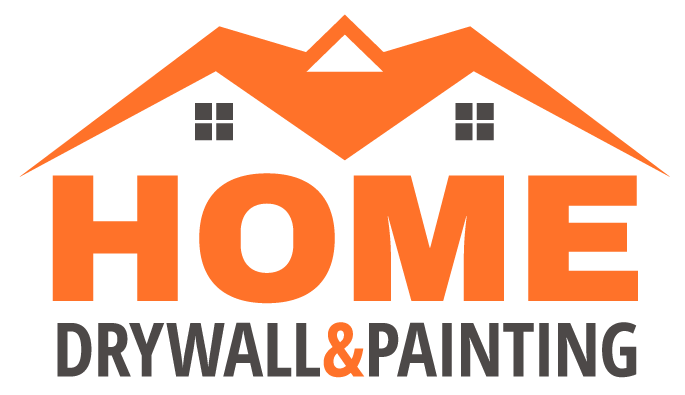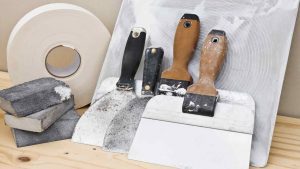When you’re building a home, there are a lot of things to do. Properly hanging drywall can be one of the most challenging parts of the remodel. However, if you want it done right and done fast, this guide will help you through every step of hanging drywall so that your new home is up to code. Drywall Repair in Lakewood Colorado
Measuring and cutting drywall Drywall Repair in Lakewood Colorado
When measuring, it’s always better to measure twice and cut once. Use a drywall square to make sure your cuts are straight. Measure the height of the wall, then cut the drywall to fit. Cut holes for windows, doors and outlets; make sure they’re big enough for what you want to put in them.
 Cutting holes for windows, doors and outlets
Cutting holes for windows, doors and outlets
To cut holes for windows, doors and outlets, use a drywall saw. Measure twice, then cut once.
For electrical boxes and switches, use a utility knife to score the drywall along the edge of where you want your new opening to be (make sure it’s deep enough). Then break away the drywall sheet by hand or with a pair of pliers.
To make your life easier when installing windows in finished walls (and avoid having to patch any holes that get knocked out during construction), measure twice and cut once with a jigsaw.
Hanging the drywall Drywall Repair in Lakewood Colorado
The first step in hanging drywall is to find the studs. To do this, you’ll need a stud finder or a hammer and nails.
If you’re using a stud finder, place it against the wall at various spots on your wall to see if it lights up (this means there’s wood behind the drywall). If it doesn’t light up, hit that spot with your hammer until you hear a solid sound—that will tell you there is no wood at that spot so don’t hang any screws there. Once all of your “nails” have been hammered into place, pull out each one and measure from end-to-end with a tape measure to get an accurate estimate of where each stud is located on your wall. If any measurements are off by more than 1/4 inch, adjust accordingly before continuing with installing drywall screws into those holes or wherever necessary.
Once all measurements are complete for hanging drywall, use either 2x4s or foam blocks (depending on what type of insulation was used) to hold up each sheet while it’s being screwed into place:
Securing the drywall with screws
When you’ve finished hanging the drywall, it’s time to secure it. This is done by drilling holes in the studs and driving screws through them into the back of your drywall sheet.
To speed up this process, use a drywall screw gun instead of a manual screwdriver. The gun will allow you to quickly apply enough force needed for each screw without having to exert much elbow grease.
Drill pilot holes with a drill bit that matches the diameter of your screws (typically 1/4″). You may want to pre-drill these holes on both sides of each stud so that when you drive your screw all the way into place (but not so far that it damages your drywall), there are still two layers of wood remaining between your wall and whatever is behind it: one layer from each side of each stud! That way if anything ever gets loose or falls out down there years later during an earthquake or something, chances are pretty good things won’t fall through because there are still two barriers left standing between them and whatever might be beneath us!
The taping process Drywall Repair in Lakewood Colorado
The taping process is one of the most critical parts of hanging drywall. The final coat of joint compound will cover any imperfections in the taped joints, so it’s important to do as good a job as possible from the beginning.
First, apply tape to both surfaces to be joined (the wall and your first piece of drywall). Make sure that you overlap each strip by about an inch or so on all sides; this will ensure a tight bond between layers when you apply joint compound later on. Once everything has been taped, cut through all three layers with a sharp utility knife at least 1″ away from where you’ll be applying joint compound. Then use a taping knife as shown in Figure 4 below:
- Apply pressure overhanging edges at 45-degree angles toward one another until they meet in centerline seam line (see Figure 4). This will reduce any chances of bubbles forming when applying joint compound later on, which could lead to unsightly bumps under paint or wallpaper coverings after they’ve dried completely into place.* Use same technique on straight edges where two pieces meet together at right angles.* Feather out ends along vertical seams using same process described above but using upward strokes instead; this will give uniform appearance overall once finished surface has been covered with several coats
Sealing joints with compound
After applying a thin layer of compound over the joint, use finger pressure to force it into the gap between sheets. You can also use a thick piece of cardboard or a small putty knife to help press the compound into place.
Once you have finished filling in your drywall joint, allow it to dry completely before sanding down any rough edges. If you are using a handheld sander instead of an orbital sander, hold one side against your body while holding the other side with both hands while moving it back and forth over the surface of your drywall joint.
Sanding the walls Drywall Repair in Lakewood Colorado
Once you’ve decided on a design, it’s time to make sure that your walls are ready for paint. The best way to do this is to sand the drywall with a sanding sponge. These sponges are made of open-cell foam and come in various grits; 220 grit is the most common choice for general wall preparation and smoothing out bumps in the surface of your drywall.
If you have some deeper or larger holes in your walls that need fixing first, use a sanding block instead of a sponge. These blocks have handles attached at 90 degrees so that you can hold them steadily as you work on smaller areas like corners or edges where it might be more difficult to achieve good balance with just one hand holding onto something else (such as a flat sheet). If there are any large gouges in your wallboard that need filling before applying new drywall compound over them later on, use either tape or joint compound (available at home improvement stores) applied directly onto the area before laying down another layer of paper panels which will cover up these defects when complete (you’ll want about 3 layers total).
Properly hanging drywall will make your remodel look professional.
Hanging drywall will make your remodel look professional. You can learn the skill with a little practice and patience, as it’s not that hard to master. Drywall is relatively inexpensive, and there are many different ways you can use it to help finish off your design. Drywall is easy to work with because of its consistency, which makes it ideal for DIY projects or hiring contractors. It’s also widely available in different thicknesses and sizes depending on how much coverage you need for your project.
As long as you properly prepare the surface where you want to hang the drywall (and follow all manufacturer’s guidelines), then hanging drywall should be a piece of cake! A professional drywall contractor in Lakewood Colorado can help with drywall repair and drywall hanging. Reach out to Home Drywall and Construction today!
Conclusion
We hope this guide has helped you gain a better understanding of the drywall hanging process. For those who are new to it, it may seem like a daunting task at first but with practice you’ll quickly get the hang of it! Remember that drywall is just another material like wood or metal which can be cut using standard tools. Once you learn some basic techniques, such as measuring and cutting holes for outlets/doors/windows properly before hanging panels on walls. If you are ready to have your drywall hanging in your home, contact your local drywall contractor near Lakewood CO. Home Drywall and Construction is your trusted drywall company. We can help with all your drywall needs from drywall hanging to drywall repair near Lakewood Colorado to more!

 Cutting holes for windows, doors and outlets
Cutting holes for windows, doors and outlets